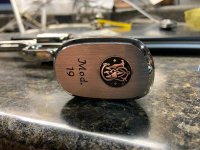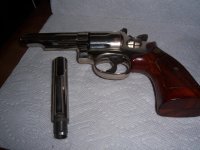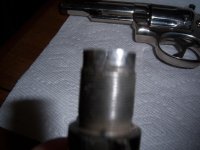Thousands of .357 Magnum rounds shot through this 19-3 including some scary hot reloads from friends. Still as smooth and accurate as day one.
I know it's a model 19 because it says so on the buttplate..
It still gets shot a lot..with full power rounds. It ain't scared and neither am I.
I know it's a model 19 because it says so on the buttplate..
It still gets shot a lot..with full power rounds. It ain't scared and neither am I.
Attachments
Last edited:




